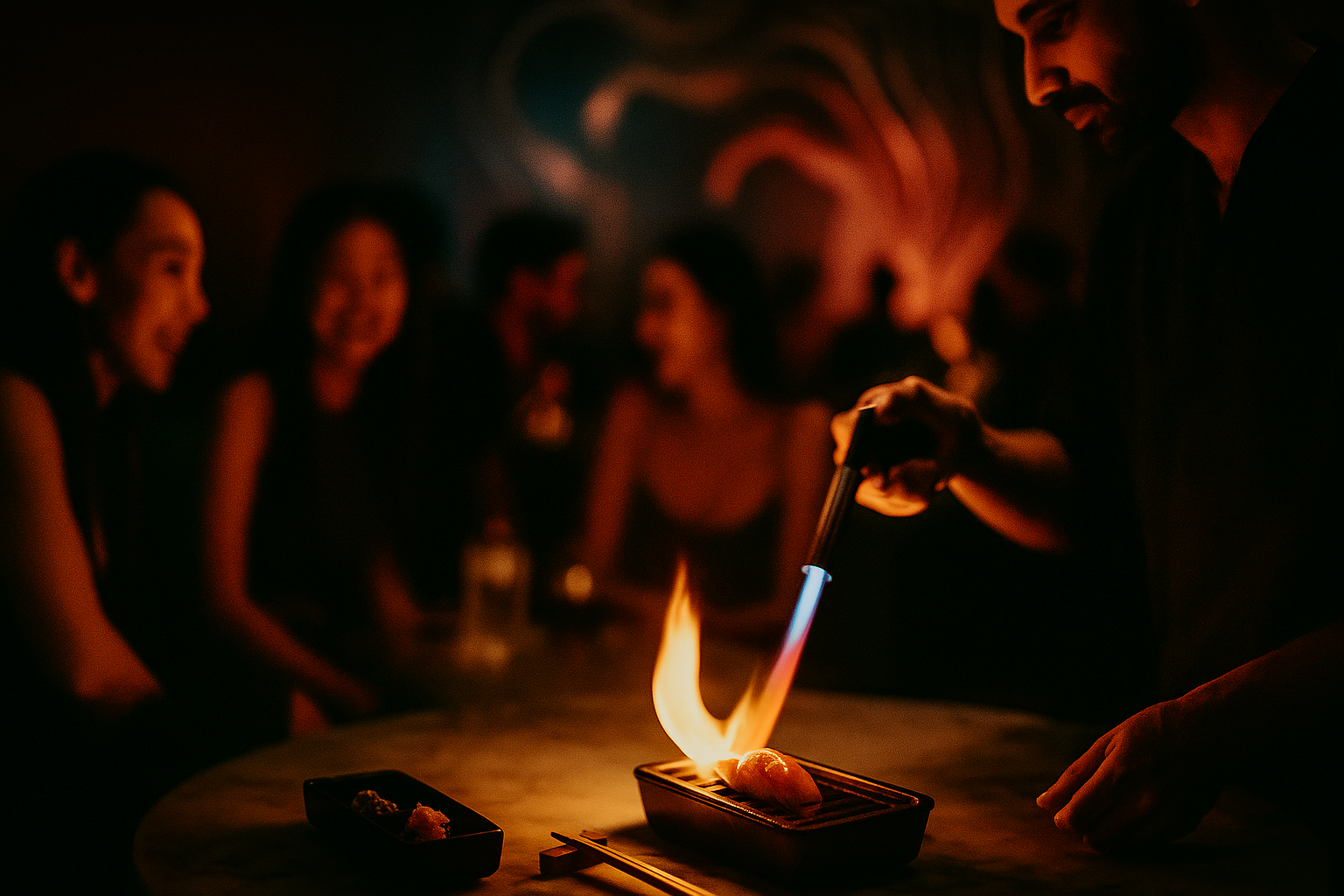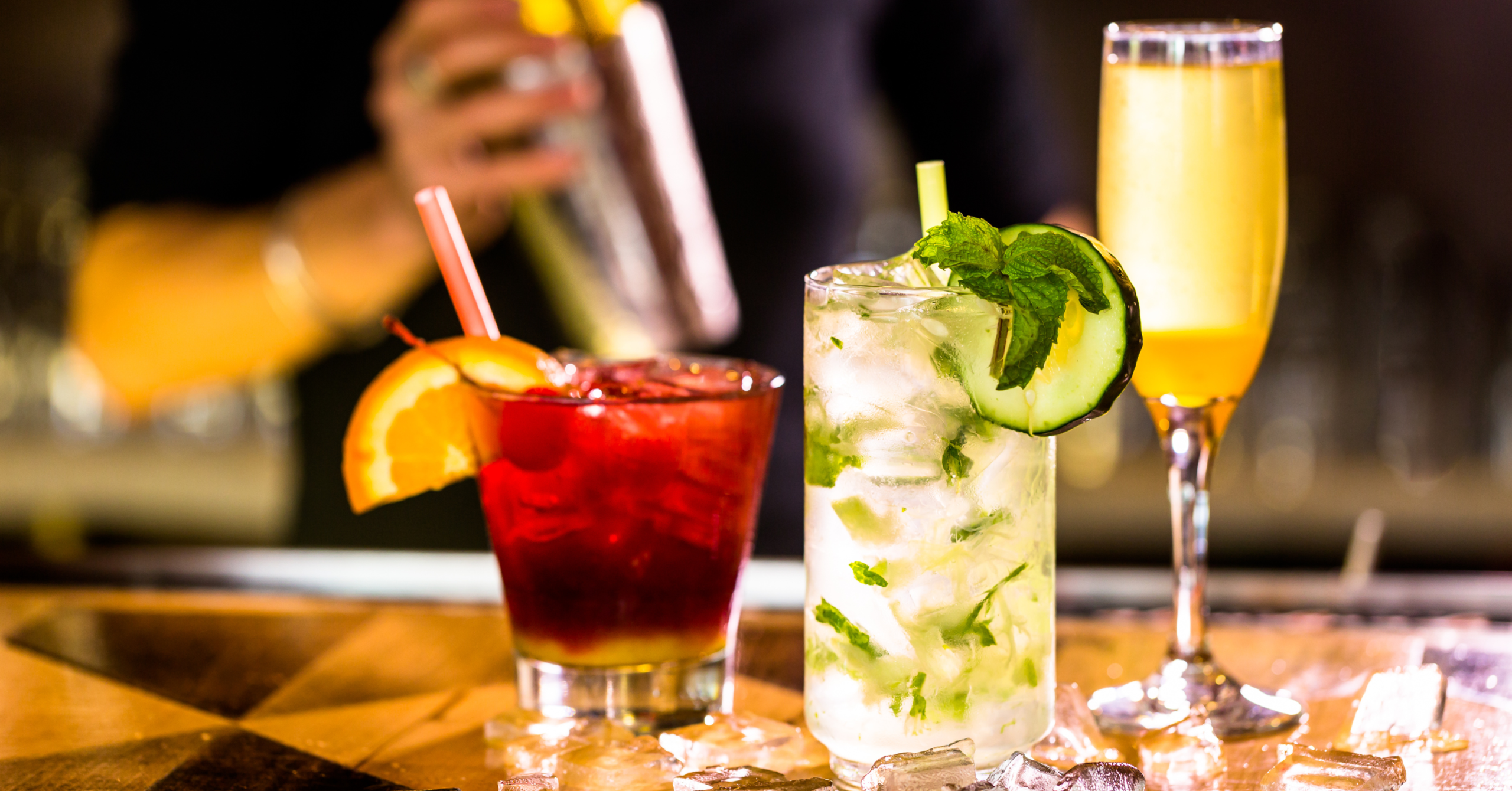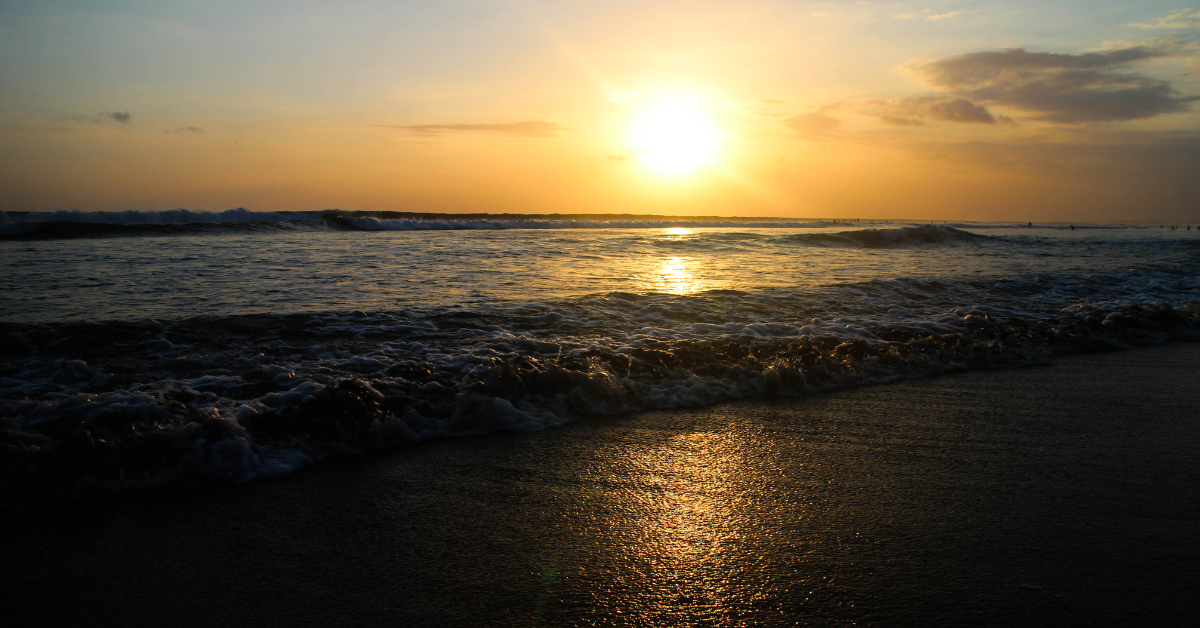What “Omakase Sushi” Actually Means
Omakase (お任せ) means “I leave it to you.” In a restaurant setting, the chef builds a sequence that moves from a bright opener to sashimi, into nigiri flights, and often a warm interlude. Many evenings finish with a small rice or noodle course and a clean dessert. No two nights are the same. Your menu reflects the day’s best catch and the chef’s read of the room. For a quick definition and history, see the neutral overview here.
Omakase vs. Tasting Menu
A tasting menu uses fixed courses that are set in advance. A restaurant omakase adapts in the moment around peak ingredients, your preferences, and the chef’s instincts. This is why two guests on different nights may enjoy a similar rhythm but not the exact same plates. A short primer on the idea of omakase also compares it to other Japanese formats.
Omakase Etiquette that Keeps the Pace
Arrive on time. Seatings protect pacing and freshness.
Keep fragrance light. Aroma is part of flavor.
Share preferences when booking. Many needs can be met with notice.
Nigiri basics: eat in one or two bites. If dipping, touch fish not rice to soy.
Ask questions and stay curious. Avoid trying to direct the order.
Take quick photos without a flash. Long filming breaks the room’s rhythm.
Want a quick refresher on sushi and chopstick manners before you go? This official guide covers the basics, including soy dipping and chopstick placement.
What Omakase Costs in 2025
Prices vary by venue, course count, and imports. As a guide:
Entry to mid experiences: mid hundreds of thousands IDR per person
Premium or extended seatings: up to a few million IDR per person, especially with pairings
Prices move with seasonality and availability. Confirm current details when you reserve.
How to Book Omakase in Bali
Pick your seat. Counter seats feel personal and give you the clearest view of the craft. Table seats are great for groups who want more space to talk.
Choose your time. Book an early or prime seating if you plan to move into the lounge afterward. It gives you a natural flow from dinner to music.
Share your needs. Add notes for allergies, halal, or vegetarian requests. Give the team time to plan a thoughtful sequence.
Consider pairings. Sake, highballs, or cocktails change how courses land on your palate. Ask for a pairing path that suits your taste.
Arrive a little early. Settle in, breathe, and let the room slow you down. Omakase is best when you keep the pace the chef sets.
When to Go and Which Seats to Choose
Weeknights often feel relaxed and intimate. Weekends are lively and social.
Counter seats are ideal if you care about the technique and want to talk to the chef.
Tables suit small groups and celebrations.
Special events and guest chefs sell out fast. Check the Events page and book in advance.
The Miss Fish Omakase (Dinner that becomes the night)
Miss Fish blends Japanese craft with after-dark energy. Start at the Omakase Bar, then slide to the Lounge as the lighting softens and the music rises.
What to expect at Miss Fish:
Curated nigiri flights with precise seasoning and temperature
Rotating warm signatures such as robata touches and seasonal plates
Sake, highball, and cocktail pairings tuned to each course
A smooth path from the chef’s counter to a music-led lounge
Plan it:
Explore the Omakase and Drinks on the Menus page.
See who is playing on Events.
Reserve your seat on Bookings.
Pairings: Sake, Highballs, and Signature Cocktails
Sake
Ginjo and Daiginjo are light and aromatic and suit delicate white fish.
Junmai is umami friendly and pairs with richer sashimi.
Nigori is creamy and can suit dessert.
A clear, non-commercial primer on sake styles is here.
Japanese whisky highballs reset the palate between fattier cuts.
Cocktails with citrus or floral notes lift raw courses, while smoky or tea-infused profiles suit grilled plates.
A Sample Omakase Flow
Seasonal bite with citrus or herbs
Sashimi trio
Nigiri round one with white fish or shellfish
Warm interlude such as robatayaki, tempura, or broiled course
Nigiri round two with richer cuts, including uni or ikura when available
Rice or noodle comfort course
Dessert or palate cleanser
Omakase is built for surprise. The joy is letting the chef lead.
Dietary Preferences and Allergies
Omakase is usually seafood forward. If you are vegetarian, halal, or avoiding raw fish, tell us before booking. With notice, many elements can be adapted. For accessibility needs, please share details so we can seat you comfortably.
FAQs
How long does omakase take?
Plan for 90 to 150 minutes, based on course count and pacing.
Can I add extras?
Often yes. Ask about add-on nigiri after the main sequence.
Is there a deposit?
Some nights or sections may require one. Confirm during booking.
What should I wear?
Smart casual suits dinner and the lounge.
Is this the same as “restaurant omakase”?
Yes. The chef curates courses in a restaurant setting, and the style varies by venue.




